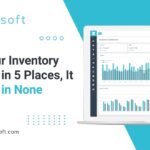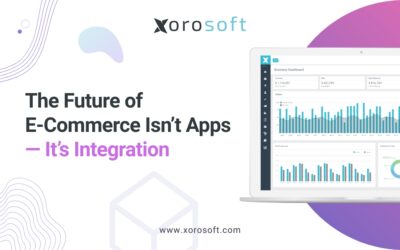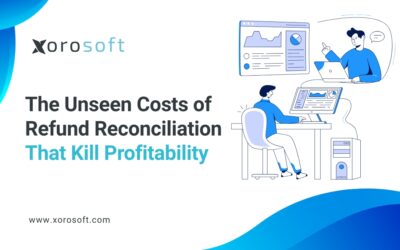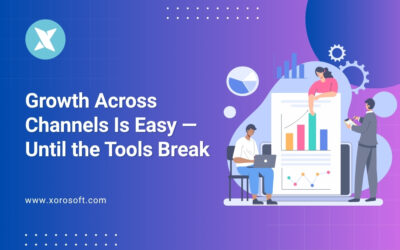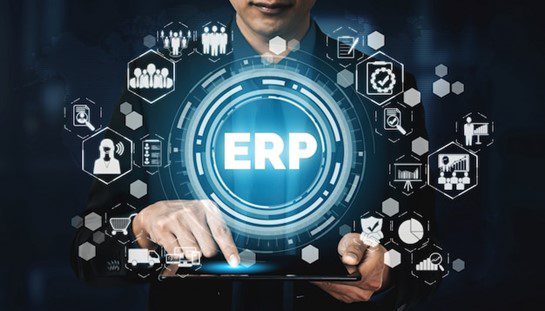
Understanding ERP Systems and their Importance
As a seasoned professional in the field of enterprise software, I understand the critical role that Enterprise Resource Planning (ERP) systems play in the success of modern businesses. ERP solutions are comprehensive software platforms that integrate and streamline a wide range of business functions, from accounting and inventory management to supply chain operations and human resources. By providing a centralized, data-driven approach to managing a company’s core processes, ERP systems have become indispensable tools for organizations seeking to enhance efficiency, improve decision-making, and gain a competitive edge in their respective industries.
However, the implementation and maintenance of an ERP system is a significant investment, both in terms of financial resources and organizational effort. As such, it is crucial for businesses to carefully evaluate the Total Cost of Ownership (TCO) of their ERP solution to ensure that it aligns with their long-term strategic goals and delivers a favorable return on investment (ROI).
The Total Cost of Ownership (TCO) Concept
The Total Cost of Ownership (TCO) is a comprehensive framework that goes beyond the initial purchase price of an ERP system, encompassing all the direct and indirect costs associated with its acquisition, implementation, and ongoing operation. By considering the full spectrum of expenses, the TCO approach provides a more accurate and holistic understanding of the true financial implications of an ERP investment, enabling organizations to make informed decisions that prioritize long-term value over short-term savings.
Factors Affecting the TCO of ERP Systems
The TCO of an ERP system can be influenced by a wide range of factors, including the complexity of the software, the size and structure of the organization, the level of customization required, and the availability of in-house technical expertise. Additionally, external factors such as market trends, regulatory changes, and technological advancements can also impact the TCO over the lifespan of the ERP system.
Key Components of TCO Evaluation for ERP Systems
To effectively evaluate the TCO of an ERP system, it is essential to consider the following key components:
- Direct Costs: These include the licensing fees, implementation and integration expenses, and any hardware or infrastructure investments required to support the ERP system.
- Hidden Costs: Such as the ongoing maintenance, upgrades, and customizations needed to keep the ERP system aligned with the organization’s evolving business requirements.
- Indirect Costs: These encompass the costs associated with user training, technical support, and the potential impact on employee productivity during the implementation and adoption phases.
By carefully analyzing each of these cost categories, businesses can gain a comprehensive understanding of the true financial implications of their ERP investment, enabling them to make more informed and strategic decisions.
Evaluating Direct Costs: Licensing, Implementation, and Integration
The direct costs of an ERP system can be significant, with the initial licensing fees often representing the most substantial upfront investment. These fees can vary widely depending on the size and complexity of the organization, the specific ERP solution selected, and the number of users or modules required. Additionally, the implementation and integration of the ERP system can incur significant expenses, including the costs of consulting services, data migration, and the integration of the ERP with existing systems and processes.
To accurately assess the direct costs of an ERP system, it is essential to carefully review the vendor’s pricing structure, understand any hidden fees or ongoing subscription costs, and budget for the necessary implementation and integration resources. By considering these factors upfront, organizations can better anticipate and plan for the direct financial impact of their ERP investment.
Hidden Costs of ERP Systems: Maintenance, Upgrades, and Customization
While the direct costs of an ERP system may be readily apparent, the hidden or ongoing costs can often be more challenging to quantify. These hidden costs can include the expenses associated with maintaining the system, implementing necessary upgrades, and customizing the software to meet the organization’s evolving business requirements.
Maintenance costs can encompass the fees for software support and updates, as well as the labor required to monitor and manage the ERP system on an ongoing basis. Upgrades, whether driven by technological advancements, regulatory changes, or the need to access new features and functionalities, can also incur significant expenses, including the costs of purchasing new software licenses, implementing the upgrades, and training users on the changes.
Furthermore, the need to customize the ERP system to align with the organization’s unique processes and requirements can result in additional development, testing, and integration costs. These customizations may also increase the complexity of the system, leading to higher maintenance and upgrade expenses in the long run.
By carefully considering these hidden costs and incorporating them into the TCO analysis, organizations can develop a more accurate and comprehensive understanding of the financial implications of their ERP investment, enabling them to make more informed decisions and plan for the long-term sustainability of the system.
Calculating Indirect Costs: Training, Support, and User Adoption
In addition to the direct and hidden costs associated with an ERP system, organizations must also consider the indirect costs that can arise during the implementation and ongoing use of the software. These indirect costs can include the expenses related to user training, technical support, and the potential impact on employee productivity during the adoption phase.
User training is a critical component of a successful ERP implementation, as it ensures that employees are equipped with the knowledge and skills necessary to effectively utilize the system. The costs of training can include the development of training materials, the delivery of training sessions, and the time spent by employees in training, which can represent a significant investment for the organization.
Technical support is another key indirect cost, as organizations must provide ongoing assistance to users to address any issues or questions that arise during the use of the ERP system. This can involve the deployment of a dedicated support team, the implementation of self-service resources, and the potential need for external consulting or support services.
Finally, the adoption of a new ERP system can also have an indirect impact on employee productivity, as users adjust to the new software and processes. This can result in temporary decreases in productivity, which can translate into lost revenue or increased labor costs for the organization.
By carefully considering these indirect costs and incorporating them into the TCO analysis, organizations can develop a more comprehensive understanding of the financial implications of their ERP investment, enabling them to make informed decisions and plan for the long-term success of the system.
Comparing TCO for Different ERP Solutions: Xorosoft ERP vs Competitors
When evaluating the TCO of an ERP system, it is crucial to compare the costs and benefits of different solutions on the market. As an example, let’s consider the TCO of Xorosoft ERP, a leading ERP platform, and compare it to that of its competitors.
Xorosoft ERP is known for its robust functionality, scalability, and user-friendly interface, which can contribute to lower implementation and training costs compared to some of its competitors. Additionally, Xorosoft’s modular design and cloud-based deployment options can lead to reduced hardware and infrastructure investments, as well as more predictable and manageable ongoing maintenance and upgrade expenses.
In contrast, some ERP solutions may have higher initial licensing fees or require more extensive customization to meet the organization’s specific needs, leading to higher direct and hidden costs. Additionally, the level of technical support and the availability of self-service resources can also impact the indirect costs associated with the ERP system.
By conducting a thorough TCO analysis and comparing the costs and benefits of different ERP solutions, organizations can make more informed decisions that align with their long-term strategic goals and financial objectives.
TCO Evaluation for Specific Functionalities: Inventory Management and Accounting
When evaluating the TCO of an ERP system, it is essential to consider the specific functionalities and modules that are most critical to the organization’s operations. For example, let’s examine the TCO implications of the inventory management and accounting modules within an ERP system.
Effective inventory management is a crucial component of many businesses, as it can directly impact the organization’s cash flow, customer satisfaction, and overall profitability. The TCO of the inventory management module within an ERP system can include the costs of software licenses, the implementation and integration of the module with existing systems, the ongoing maintenance and updates, and the training and support required for users.
Similarly, the accounting module within an ERP system is essential for financial reporting, compliance, and decision-making. The TCO of this module can encompass the costs of software licenses, the implementation and integration with other financial systems, the ongoing maintenance and upgrades, and the training and support required for finance and accounting personnel.
By evaluating the TCO of these specific functionalities, organizations can better understand the financial implications of their ERP investment and make more informed decisions about the features and modules that are most critical to their business operations.
Selecting the Right ERP System: TCO Considerations for Xorosoft ERP
When selecting an ERP system, the TCO analysis should be a critical factor in the decision-making process. As an experienced professional, I recommend considering the following TCO-related factors when evaluating Xorosoft ERP and other ERP solutions:
- Licensing and Deployment Model: Evaluate the pricing structure and deployment options (on-premise, cloud, or hybrid) to understand the upfront and ongoing costs associated with the ERP system.
- Implementation and Integration: Assess the complexity and costs of implementing the ERP system and integrating it with existing business processes and IT infrastructure.
- Customization and Flexibility: Determine the level of customization required to meet the organization’s unique needs and the associated costs, as well as the system’s ability to adapt to future changes.
- Maintenance and Upgrades: Understand the costs and effort required to maintain the ERP system, including software updates, security patches, and system enhancements.
- Training and Support: Evaluate the resources available for user training and technical support, as well as the potential impact on employee productivity during the adoption phase.
By carefully considering these TCO-related factors, organizations can make more informed decisions about the ERP system that best aligns with their long-term strategic and financial objectives.
TCO Optimization Strategies for ERP Systems
To ensure the long-term success and cost-effectiveness of an ERP system, organizations should explore various TCO optimization strategies. These strategies can include:
- Standardization and Minimization of Customization: Reducing the level of customization required can help minimize the ongoing maintenance and upgrade costs associated with the ERP system.
- Leveraging Cloud-based Deployment: Cloud-based ERP solutions can often provide more predictable and manageable costs, as well as reduced infrastructure and maintenance requirements.
- Optimizing User Training and Support: Investing in comprehensive user training and providing effective technical support can improve user adoption and productivity, ultimately reducing indirect costs.
- Continuous Process Improvement: Regularly reviewing and streamlining business processes can help organizations maximize the value of their ERP investment and maintain a favorable TCO over time.
- Effective Change Management: Implementing a robust change management strategy can facilitate a smooth transition to the new ERP system and minimize disruptions to the organization’s operations.
By implementing these TCO optimization strategies, organizations can enhance the long-term value of their ERP investment and ensure that the system continues to deliver a favorable return on investment.
Conclusion: Making Informed Decisions for Long-term Success
In conclusion, the Total Cost of Ownership (TCO) of an ERP system is a critical consideration for organizations seeking to maximize the value of their technology investments. By carefully evaluating the direct, hidden, and indirect costs associated with the ERP system, businesses can make more informed decisions that align with their long-term strategic and financial objectives.
As an experienced professional, I recommend that organizations thoroughly assess the TCO of Xorosoft ERP and other ERP solutions, considering factors such as licensing, implementation, customization, maintenance, and user adoption. By doing so, they can ensure that their ERP investment delivers a favorable return and supports the long-term success of their business.
To learn more about how Xorosoft ERP can help your organization optimize its TCO, book a demo with our team today. Our experts will provide a personalized assessment and guide you through the key considerations to help you make the best decision for your business.


